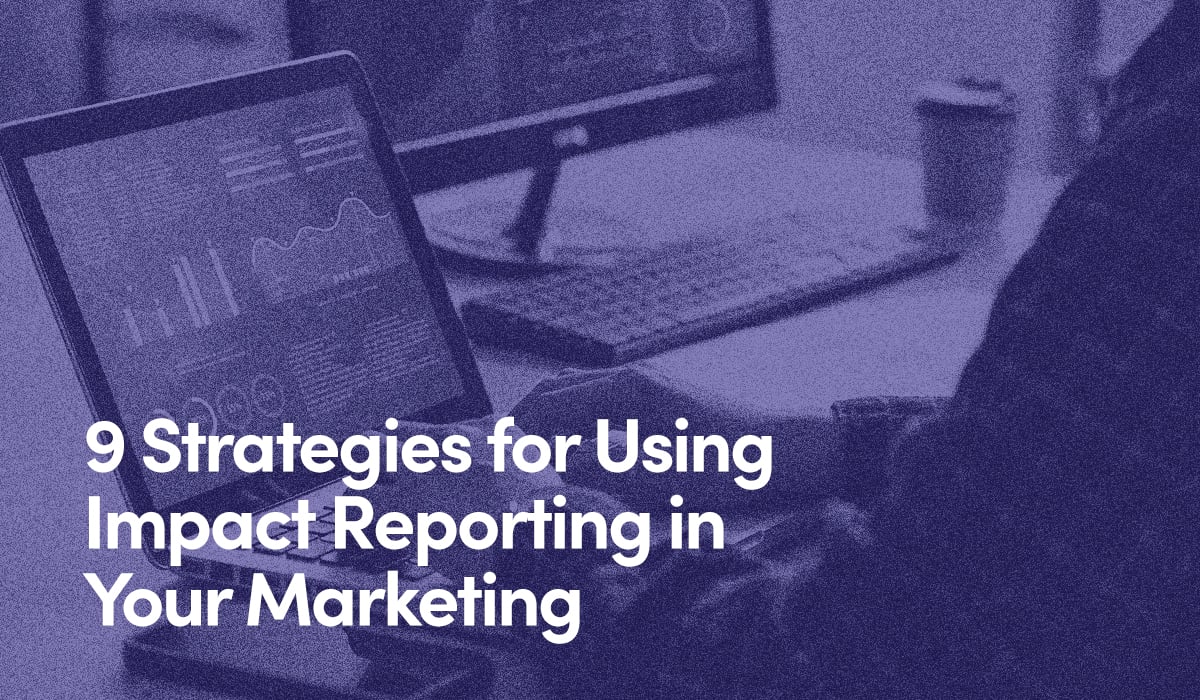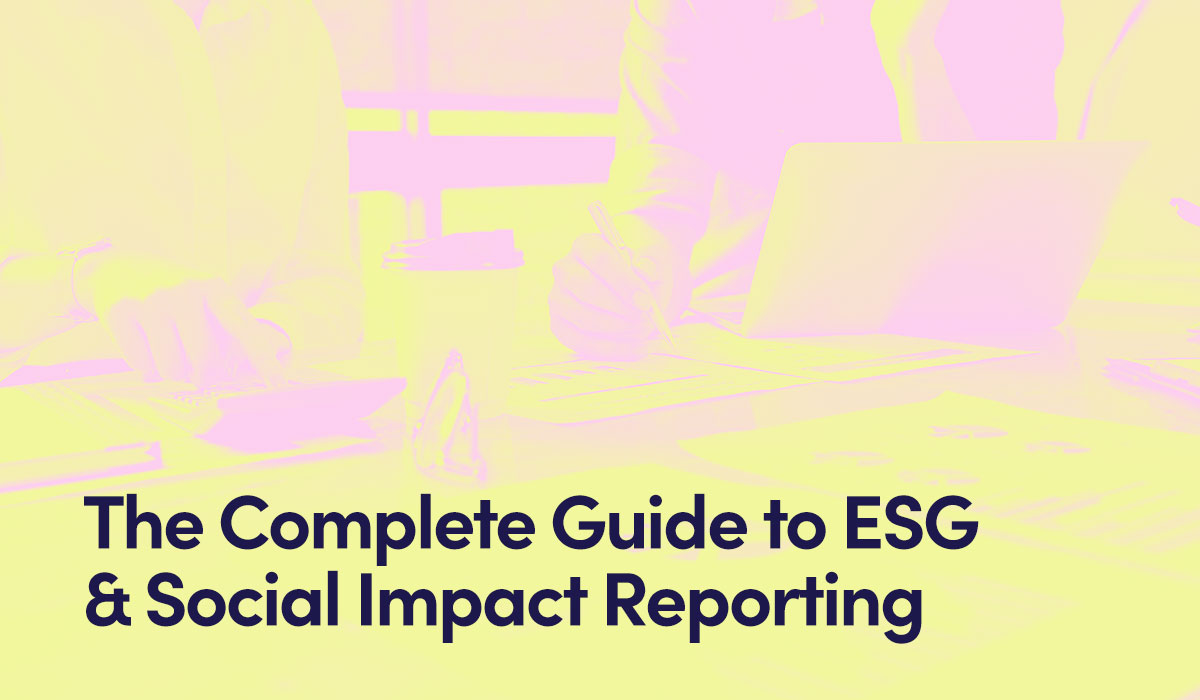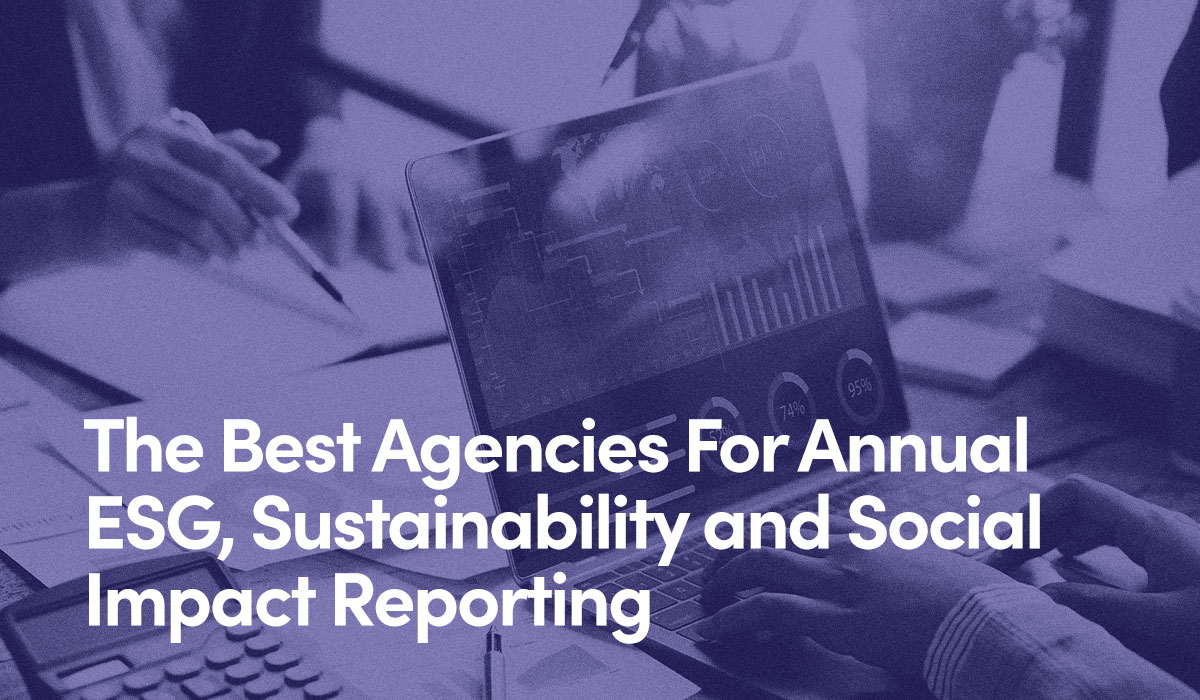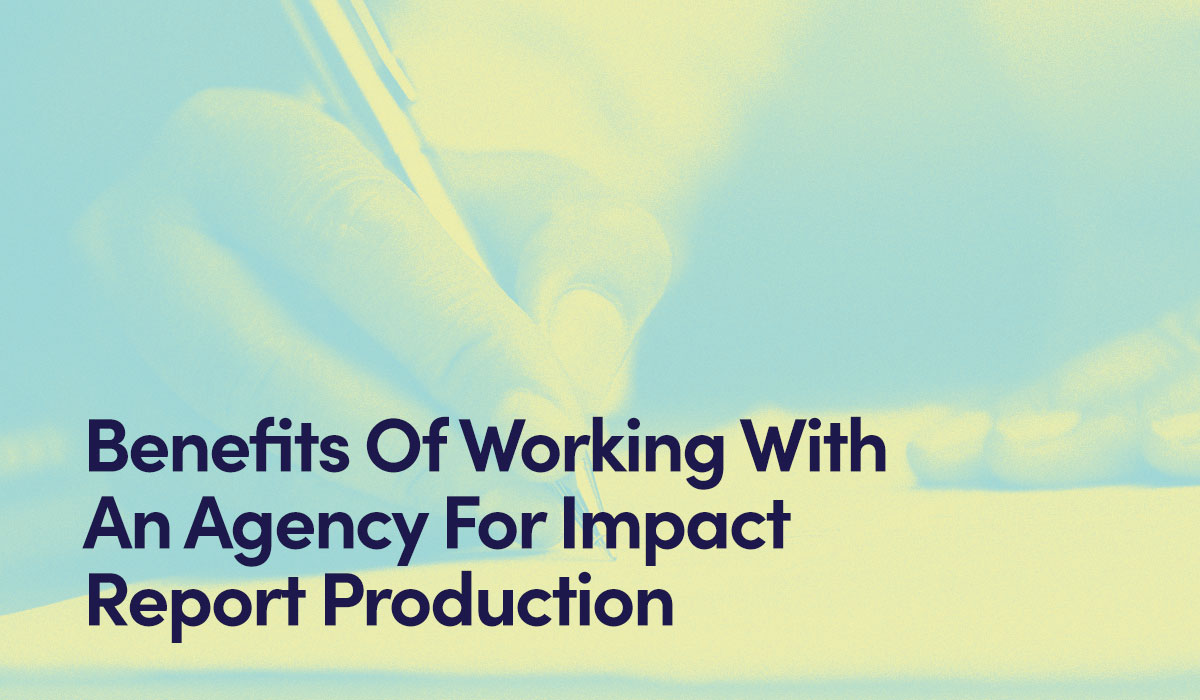From establishing a stronger reputation with current and new customers, bolstering your appeal among investors, and showcasing the many ways in which you’re working to improve the world around you, a well-crafted social impact report is a great way to encapsulate your organization’s mission and culture.
While these projects are quickly becoming a necessary part of doing business, especially as regulators are seeking more transparency around environmental and sustainability policies, producing such a report can also help drive positive interest in your direction.
Establishing a strong reputation is as important as ever, particularly in light of recent surveys and polling that shows consumers are more likely to support businesses that align with their values. Those same analyses often come to another conclusion: Consumers are increasingly comfortable with abandoning companies that are solely focused on their bottom line rather than contributing to positive societal change.
In short, your social impact journey doesn’t simply end with the publication and distribution of a report. Instead, consider it an invaluable resource for your company, whether it’s to boost marketing efforts, attract talent, appeal to investors, and create compelling content across your digital platforms.
Maximizing Your Social Impact Report for Marketing
In today’s socially conscious world, leveraging your impact report can be a powerful tool to enhance your marketing efforts and differentiate your brand from competitors. By showcasing your organization’s commitment to making a positive difference, you can attract socially conscious consumers and build a loyal customer base.
Here are some strategies to maximize the impact of your social impact report on your marketing campaigns and effectively communicate your brand’s values.
1. Highlight Your Key Achievements
One of the most important aspects of your social impact report is highlighting your key achievements. This includes demonstrating the positive change your company has made, making note of specific goals achieved, and emphasizing the impact of your initiatives. By quantifying and presenting this information in a clear and concise manner, you can demonstrate your organization’s dedication to creating a better world.
For example, in our 2022 social impact report (representing the time before our rebrand), we employed a blend of design elements and concise blurbs to draw attention to some of our most significant accomplishments from that year:
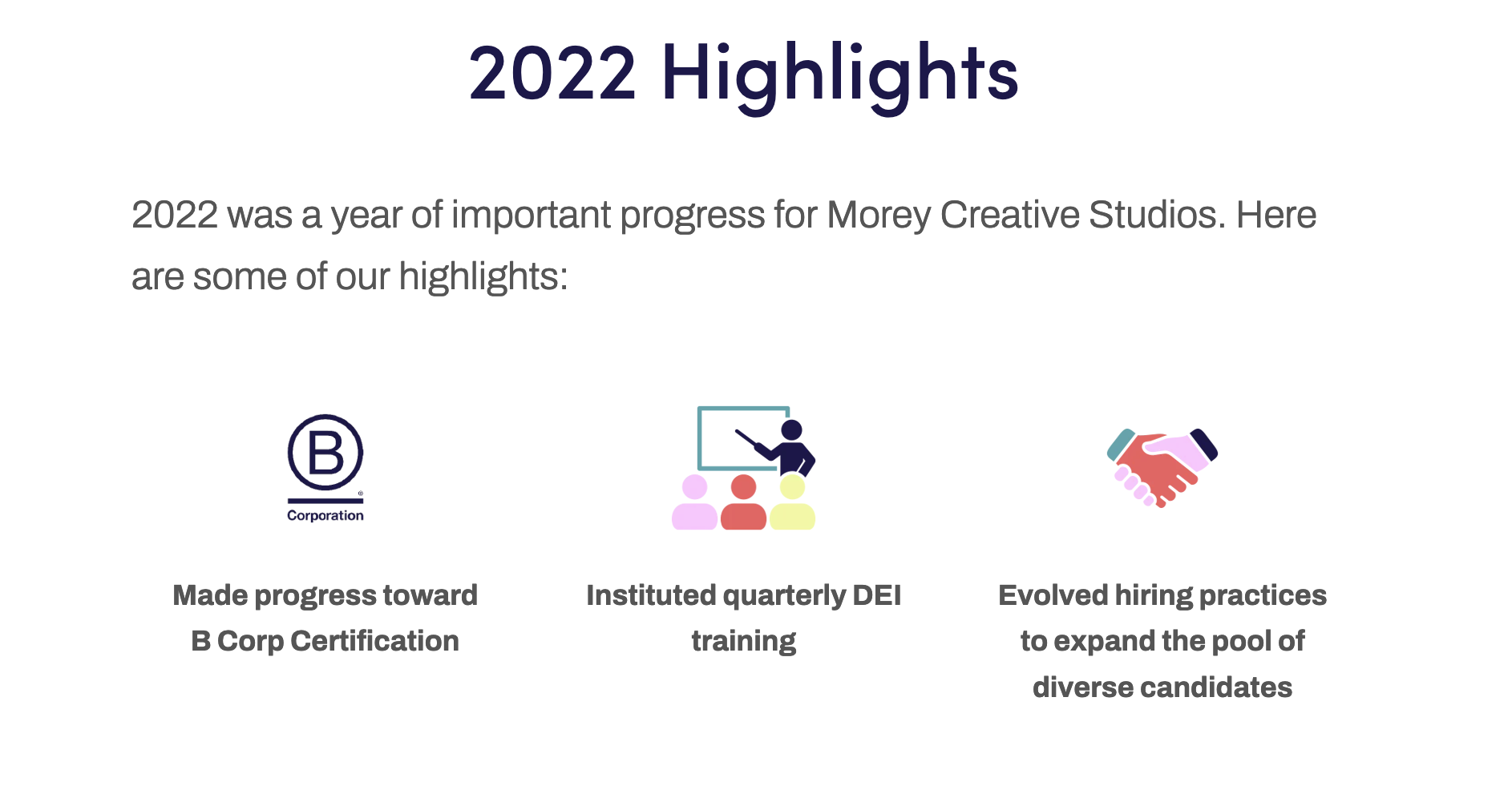
2. Incorporate Visuals and Infographics
Visual content is highly effective in capturing attention and conveying information quickly. Incorporate compelling visuals and infographics into your social impact report to present your data in an engaging and easily digestible format. This makes your report more shareable on social media platforms, increasing its reach and impact.
For perspective, here’s how we implemented visual elements to better convey the data we obtained from an internal demographics survey:
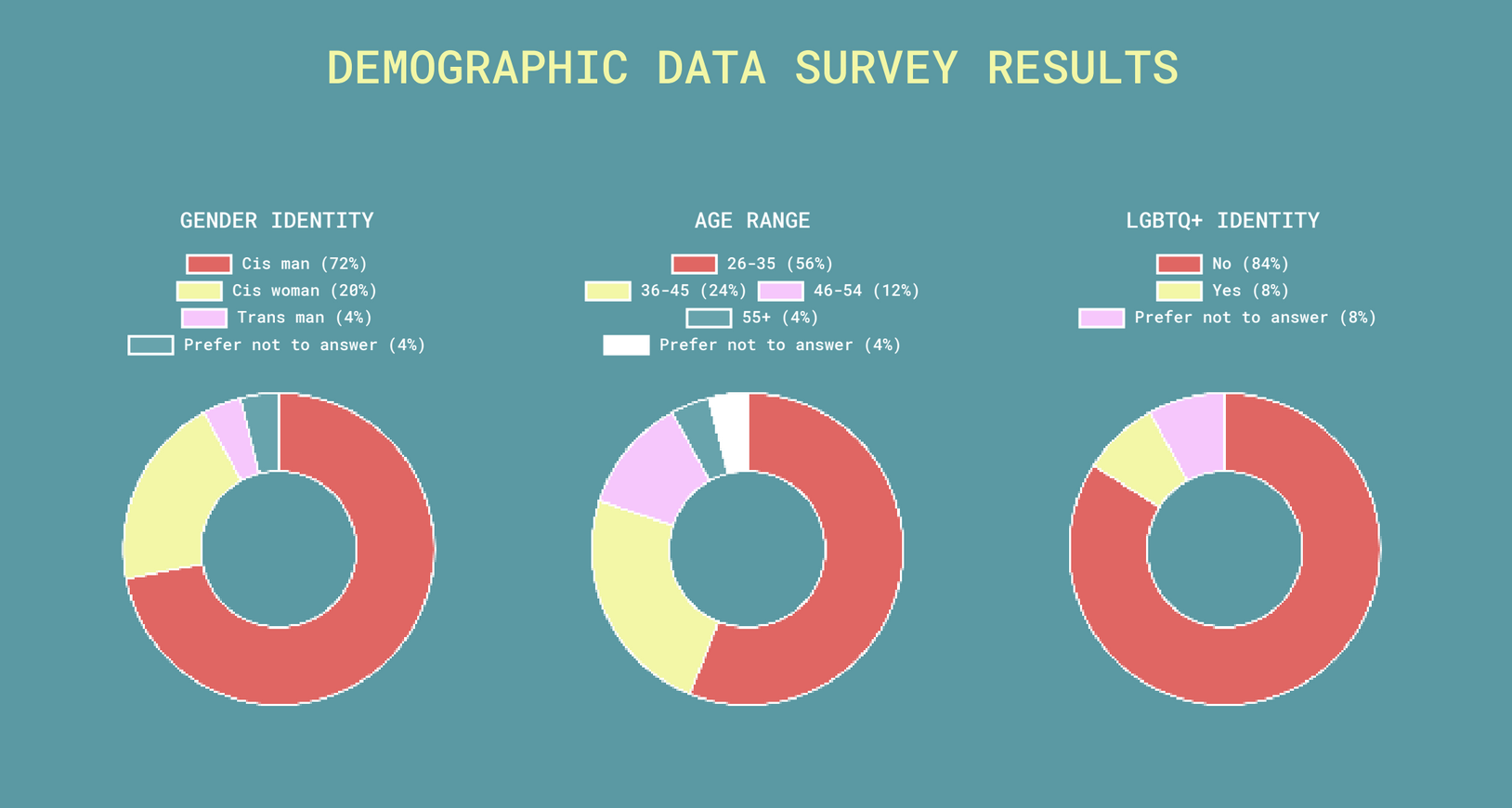
3. Create Compelling Stories
Beyond presenting data, it’s important to share compelling stories about the individuals or communities positively affected by your social initiatives. By weaving these stories into your marketing efforts, you can evoke emotions and build a stronger connection with your target audience. Personal narratives make your impact more relatable and memorable, leaving a lasting impression on your audience.
Showcase Your Positive Impact on the World
Want to Connect With Values-Driven Consumers and Investors?
Amplify Your Story With Social Impact Reporting arrow_forward4. Share Personal Testimonials
To add authenticity and credibility to your brand, collect testimonials from individuals who have benefited from your initiatives and use them in your marketing materials. If you’re a B2B company, highlighting the experiences of your partners or clients goes a long way in building up your company’s reputation. By sharing these personal testimonials, you can demonstrate the real-life impact of your work and build trust with your audience.
Here’s an example:
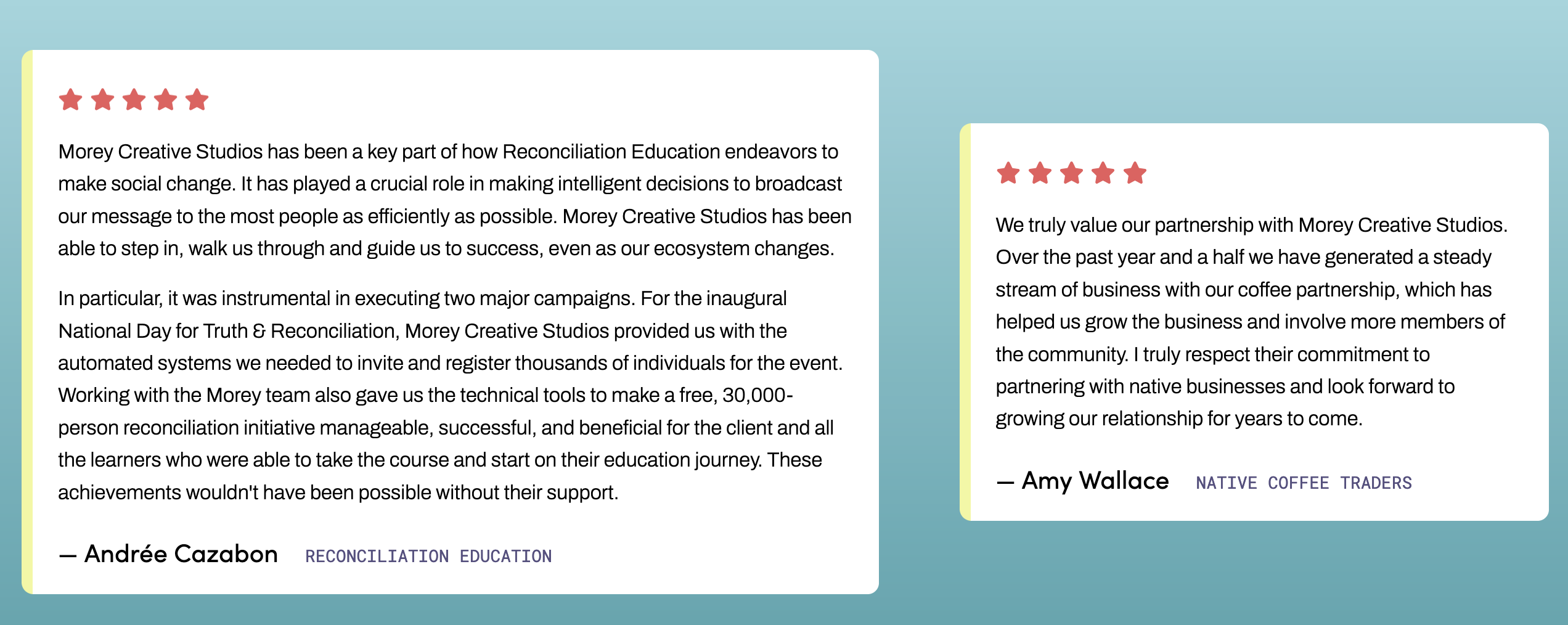
5. Collaborate with Like-Minded Partners
Partnering with other organizations that align with your social impact goals can help you reach a wider audience and amplify your message. Co-create content to showcase the real-life impact of your initiatives. This not only increases your visibility but also adds credibility and authenticity to your brand.
This element goes beyond building up your marketing efforts. Collaborating with like-minded organizations is one of the best way to maximize your impact-related goals. Having a diverse collection of partners also helps introduce new perspectives and ideas that you may have never considered.
At Hypha HubSpot Development, we’ve historically sought out partnerships with similarly minded organizations. In recent years that has taken the form of social justice and inclusion efforts. To help build awareness about these important issues, we became a founding partner of InclusionHub, which seeks to create a more inclusive digital world, and support News Beat, a mult-award-winning social justice podcast. For our report, we included an audio storytelling element to highlight a clip from the InclusionHub Podcast, specifically one about the importance of web accessibility.
6. Leverage Social Media Platforms
Social media platforms offer unparalleled opportunities to amplify the reach and impact of your social impact report and engage with your target audience. By leveraging various social media channels, you can effectively share your report and create meaningful conversations around your initiatives.
One effective strategy is to carefully choose platforms that make sense from a brand and audience perspective. For example, if your target audience consists of professionals and businesses, platforms like LinkedIn and Twitter may be more suitable. On the other hand, if your target audience is younger and more visually-oriented, Instagram and TikTok may be more effective.
Once you have identified the appropriate venues for your content, it’s crucial to optimize your social media posts to maximize engagement. Use attention-grabbing headlines and compelling visuals to capture the audience’s attention as they scroll through their feeds. Infographics, images, and videos can be particularly powerful in conveying key information and making your report more shareable. In a perfect world, those elements could be pulled directly from your report, making the process more efficient.
To encourage conversations around your initiatives, consider using interactive features offered by social media platforms. For instance, you can create polls or ask thought-provoking questions related to your social impact report. This not only increases engagement but also provides valuable insights into your audience’s thoughts and opinions.
Establishing a strong reputation is as important as ever, particularly in light of recent surveys and polling that shows consumers are more likely to support businesses that align with their values.
Integrate Social Impact Messaging in Marketing Materials
Infuse your marketing materials, such as website content, advertisements, and email newsletters, with social impact messaging. This conveys your brand’s commitment to making a difference and attracts socially conscious consumers.
7. Optimize Website Content
Incorporate keywords related to social impact in your website content to improve search engine rankings and attract organic traffic from individuals searching for socially responsible brands. By optimizing your website content, you can increase visibility and attract the right audience.
You can also leverage your impact report and other material related to your initiatives to inform blogs, email, and social media campaigns.
8. Impactful Content & Blogs
For any organization utilizing content marketing strategies to drive relevant traffic to your site and help generate leads, this should come second nature.
Begin by launching a comprehensive campaign centered around your social impact report. Consider crafting separate blog posts that delve into specific aspects of the report, including notable achievements, partnerships and collaborations, the overall impact of your initiatives, and more. This approach allows for a more in-depth exploration of each section, giving your audience a comprehensive understanding of your organization’s commitment to positive change.
9. Emails
In the ever-evolving realm of digital marketing, email continues to be a reliable and effective method for strengthening your brand, piquing the interest of your target audience, and converting leads into loyal customers.
You can leverage your impact-related blog strategy to build excitement around your report and directly engage with existing and potential customers. Depending on how robust your report is, you can create thoughtful and unique email campaigns to highlight ways in which you’ve contributed to positive social change while also driving interest to the report itself.
Of course, there’s always more you can do to raise awareness and generate more interest around your initiatives. If your company identifies as a mission-driven organization, it would make sense to also incorporate impact-related messaging into your core site pages, which can have serious SEO benefits.
Aligning Social Impact Reporting with Digital Marketing
Leveraging your social impact report in your marketing efforts is crucial for enhancing your brand’s appeal, attracting socially conscious consumers, and building a loyal customer base. By highlighting your key achievements, incorporating visuals and compelling stories, sharing personal testimonials, collaborating with like-minded partners, and leveraging social media platforms, you can effectively communicate your brand’s values and make a positive impact in the world. Producing a social impact report is not only important for regulatory compliance but also offers numerous benefits, including boosting your reputation, attracting talent and investors, and creating compelling content for your digital platforms.
Bringing Social Impact to Market: The Next Phase in Growth-Driven Content Marketing
At Hypha HubSpot Development, we translate your impact into a compelling narrative that clarifies your message, amplifies your mission, and enables like-minded customers, investors, and talent to engage with your brand. Learn more about our non-financial social impact reporting capabilities.

